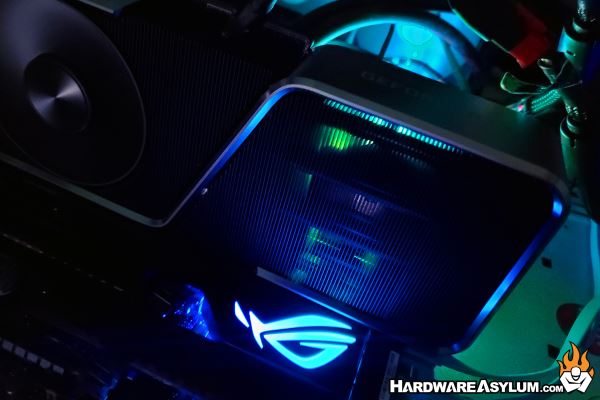Nvidia RTX 3070 Ti Video Card Review
Author: Dennis GarciaConclusion
In this review we look at the new GeForce RTX 3070 Ti from NVIDIA. This is the second card in the second release of the RTX 30-Series which creates a nice price/performance point that most gamers can not only appreciate but also afford. Sure, it isn’t as fast as our RTX 3080 Ti but is closely matched to the RTX 2080Ti and a worthy upgrade to any system.
When it comes to specs, I was surprised to see how deeply NVIDIA cut into the Ampere chip to give the card only 48 SM Units, 6144 CUDA Cores, 192 3rd Gen Tensor Cores and 48 2nd Gen RT Cores, 192 Texture Units and 96 ROPs. If you are looking just at CUDA Cores the RTX 3080 Ti comes with 10240 while the RTX 3070 Ti is a little over half that. Despite this the increase in clock speed still makes the card respectable and gives NVIDIA some wiggle room for something better. (Super Ti anyone?)
The 30-Series features a new heatsink design that not only compliments the more compact form factor but promises to be more efficient and offering a new flow pattern. I noticed that with the RTX 3080 Ti the Founders Edition heatsink would literally cook the NVMe cooler on my motherboard and I am happy to report that the RTX 3070 Ti has no such problem. All of the exhaust air is directed away from the motherboard for worry free gaming. Of course, if the GPU is mounted vertically, we still have the issue of hot air blowing across your memory modules but, the lower 290W TGP has the card running cooler across the board.

Overall performance was a bit of a surprise especially when looking at the numbers between the RTX 2080 Ti KPE and the RTX 3070 Ti. NVIDIA claims the 3070 Ti offers a 1.5x performance boost over the 2070 Super which is believable considering our benchmark numbers. It goes without saying that all of these cards were powerhouses in their day and many are still respectable gaming cards in any build which making the upgrade decision rather difficult.
Overclocking on high-end graphics has “always” been very incremental. Old graphics cards were limited by the silicon but when you could get them to overclock every Mhz counted. For modern cards like the GTX 1080 Ti, RTX 2080 Ti and RTX 3080 Ti the overclocking process has changed and the clock speeds printed on the box are merely guidelines and likely the lowest number you will ever encounter. If you can keep these cards cool you will enjoy the full effect of Nvidia Boost technology making manual overclocks rather pointless.
In fact, most of the overclocks “you” are doing fall within the normal Boost map which can actually hurt performance. Of course, this wouldn’t be Hardware Asylum without some clock tweaks and I am proud to say that 2100Mhz is attainable and gets you 1000-2000 extra points in 3DMark benchmarks and no discernable framerate improvement in games.
NVIDIA makes it so easy to overclock you shouldn’t even bother trying.
Generally speaking, we like to recommend a two-generation upgrade path meaning that if your GPU is over two generations old then it might be time to upgrade. The features and options can change overnight and you owe it to yourself to take advantage when you can. If you are running an RTX 20-Series then you might be ok skipping the 30-Series while anyone rocking a GTX 10-Series or lower might start hitting the deal sites and getting in queue for something new.
Of course, that is easier said than done considering how quickly the RTX 3080 Ti sold out on launch day.
Sleek New Design
Silent Operation
Nice Performance Boost over RTX 20-Series
The Only Way to Play RTX
Founders Edition heatsinks can blow directly on motherboard
Requires a power adaptor making cable routing a chore

Recommend
https://www.hardwareasylum.com

